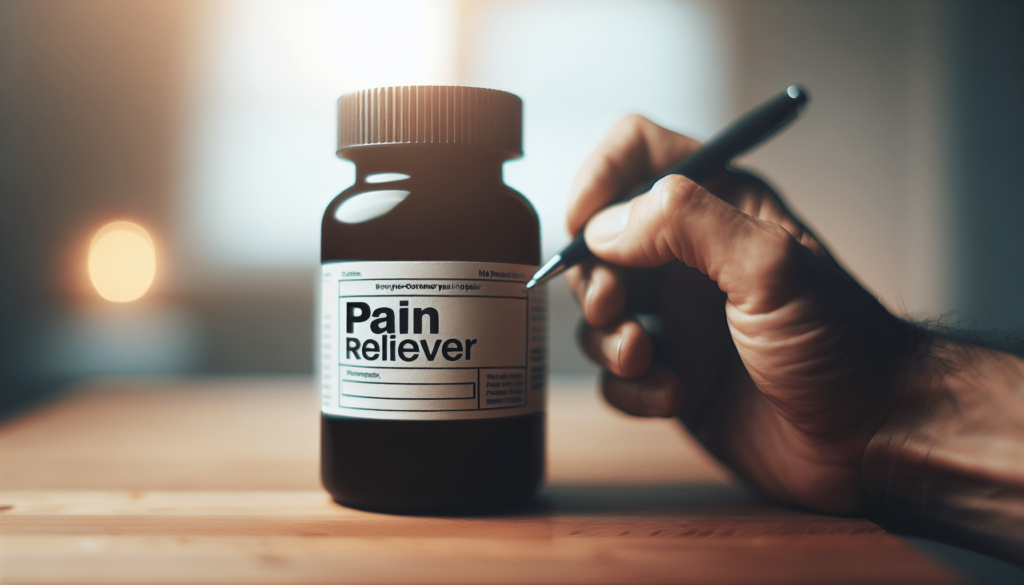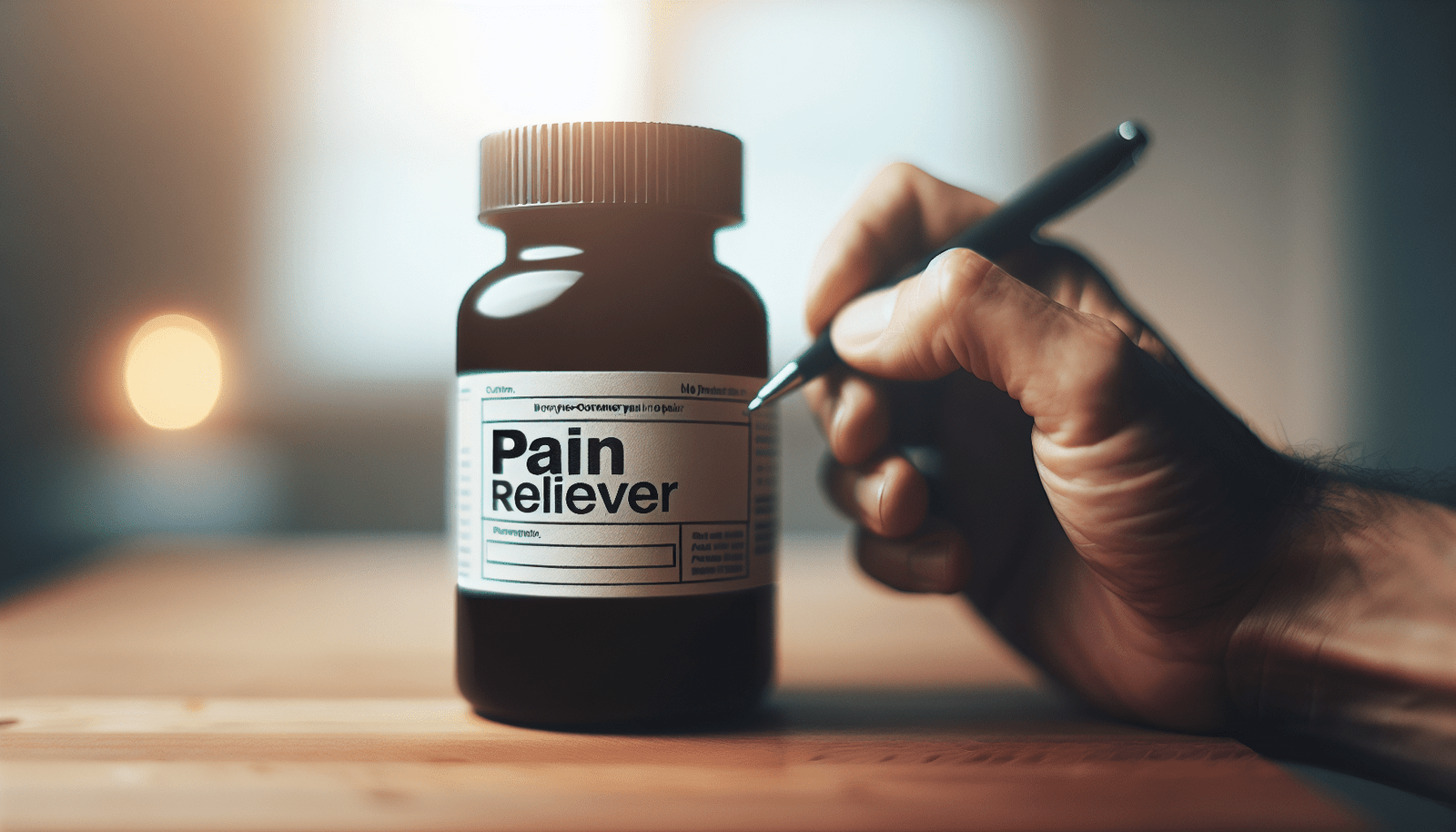Welcome to the world of pain management without needing a referral! This article will explore the various options available to you for managing your pain, whether it be chronic or acute. From self-care techniques to alternative therapies, you will discover ways to alleviate your discomfort without the hassle of waiting for a referral from a healthcare provider. Say goodbye to long wait times and take control of your pain management journey today!
Pain Management Without Referral
Have you ever experienced pain that you wish you could manage without having to wait for a doctor’s referral? In this article, we will explore various methods and techniques for managing pain without the need for a formal referral. Whether you’re dealing with chronic pain or an acute injury, there are many strategies you can try on your own to help alleviate discomfort and improve your quality of life.
Understanding Pain Management
Pain management is the process of using various techniques and strategies to reduce or eliminate pain. This can include both physical and psychological methods to help address the underlying causes of discomfort. By understanding how pain works and how it affects your body, you can develop a personalized plan to help manage your symptoms effectively.
Let’s break down some key concepts to help you better understand pain management and how you can take control of your own well-being.
Types of Pain
Pain can be classified into different categories based on its duration and intensity. Acute pain is sudden and usually temporary, such as the pain you feel after a minor injury. Chronic pain, on the other hand, persists over a longer period of time and can significantly impact your daily life.
Understanding the type of pain you are experiencing can help guide your treatment plan and determine which methods may be most effective for you.
Pain Scales
Pain scales are tools used to measure the intensity of pain and help healthcare providers assess the level of discomfort a patient is experiencing. These scales typically range from 0 (no pain) to 10 (worst possible pain), allowing individuals to communicate their pain levels effectively.
You can also use pain scales to track your pain levels over time and monitor how different treatments or strategies are affecting your symptoms.
Non-Pharmacological Pain Management Techniques
When it comes to managing pain without a referral, there are several non-pharmacological techniques you can try on your own. These methods focus on addressing the root causes of pain and promoting overall well-being.
Let’s explore some effective non-pharmacological pain management strategies that you can incorporate into your daily routine.
Physical Therapy and Exercise
Physical therapy can be a valuable tool for managing pain, especially if you are dealing with musculoskeletal issues or injuries. A physical therapist can help you develop a personalized exercise program to improve strength, flexibility, and range of motion, all of which can help reduce pain and prevent further injury.
Incorporating regular exercise into your routine can also be beneficial for managing pain. Low-impact activities such as walking, swimming, or yoga can help increase blood flow, reduce inflammation, and release endorphins, which are natural pain relievers.
Heat and Cold Therapy
Applying heat or cold to the affected area can help alleviate pain and reduce inflammation. Heat therapy, such as using a heating pad or taking a warm bath, can increase blood flow and relax tense muscles. Cold therapy, such as using an ice pack or cold compress, can numb the area and reduce swelling.
Experiment with both heat and cold therapy to see which provides the most relief for your specific type of pain. Remember to follow safety guidelines and avoid applying heat or cold for extended periods of time.
Mindfulness and Relaxation Techniques
Stress and anxiety can exacerbate pain symptoms, so incorporating mindfulness and relaxation techniques into your daily routine can help reduce tension and promote a sense of calm. Practices such as deep breathing, meditation, progressive muscle relaxation, and guided imagery can all be effective in managing pain.
Take time each day to engage in these techniques and find what works best for you. You may also consider seeking out resources such as online videos, apps, or classes to further enhance your mindfulness practice.

Pharmacological Pain Management Options
In some cases, pharmacological interventions may be necessary to help manage pain effectively. While it’s always best to consult with a healthcare provider before starting any medication, there are several over-the-counter and prescription options available that can provide relief.
Let’s explore some common pharmacological pain management options that you may consider incorporating into your pain management plan.
Over-the-Counter Pain Relievers
Over-the-counter pain relievers such as acetaminophen, ibuprofen, and naproxen can be effective for managing mild to moderate pain. These medications work by reducing inflammation, blocking pain signals, and lowering fever. Be sure to follow dosing instructions carefully and avoid taking multiple medications that contain the same active ingredients.
If you have any underlying health conditions or are taking other medications, consult with a pharmacist or healthcare provider before starting a new pain reliever to ensure it is safe for you.
Prescription Pain Medications
For more severe or chronic pain, your healthcare provider may recommend prescription medications to help manage your symptoms. These medications can range from opioids for acute pain to antidepressants or anticonvulsants for chronic pain conditions.
It’s important to follow your provider’s instructions carefully when taking prescription pain medications and to be aware of potential side effects or risks associated with long-term use.
Topical Pain Relief Products
Topical pain relief products, such as creams, gels, patches, or sprays, can provide targeted relief for specific areas of pain. These products are applied directly to the skin and can help reduce inflammation, numb the area, or block pain signals.
Look for topical products that contain ingredients like menthol, capsaicin, or lidocaine for different types of pain relief. Be sure to follow the instructions for proper application and use these products as directed.
Lifestyle Modifications for Pain Management
In addition to non-pharmacological and pharmacological interventions, making lifestyle modifications can also play a significant role in managing pain effectively. By focusing on your overall health and well-being, you can take steps to reduce pain and improve your quality of life.
Let’s explore some lifestyle modifications that you can consider incorporating into your daily routine to help manage pain without a referral.
Healthy Diet and Nutrition
Eating a balanced diet rich in fruits, vegetables, whole grains, and lean proteins can help reduce inflammation and support overall health. Certain foods, such as fatty fish, nuts, seeds, and foods high in antioxidants, can have anti-inflammatory properties and help alleviate pain.
Consider working with a nutritionist or dietitian to develop a personalized meal plan that supports your pain management goals and addresses any underlying health issues you may have.
Stress Management and Emotional Well-Being
Chronic pain can take a toll on your emotional well-being, so prioritizing stress management techniques and emotional support is essential. Engaging in activities that bring you joy, practicing relaxation techniques, seeking therapy or counseling, and connecting with others can all help improve your mental health and reduce pain levels.
Remember to listen to your body, practice self-care, and seek professional help if you are struggling to cope with the emotional impact of pain.
Sleep Hygiene and Rest
Getting an adequate amount of restful sleep is crucial for managing pain and maintaining overall health. Poor sleep quality can exacerbate pain symptoms and make it more difficult to cope with discomfort. Establishing good sleep hygiene practices, such as maintaining a consistent sleep schedule, creating a relaxing bedtime routine, and optimizing your sleep environment, can help improve your sleep quality and reduce pain levels.
Consult with a healthcare provider if you are experiencing persistent sleep disruptions that are impacting your pain management efforts.

Conclusion
Pain management without a referral is possible when you take a proactive approach to your well-being and incorporate a variety of techniques into your daily routine. By understanding the different types of pain, exploring non-pharmacological and pharmacological options, making lifestyle modifications, and seeking professional guidance as needed, you can effectively manage your pain and improve your quality of life.
Remember that every individual is unique, and what works for one person may not work for another. Be patient with yourself, stay consistent with your pain management strategies, and don’t hesitate to seek support from healthcare providers, therapists, or other professionals who can help guide you on your journey to pain relief.
Take control of your pain management and empower yourself to live a healthier, happier life starting today. You deserve to feel your best and enjoy every moment to the fullest. You’ve got this!


